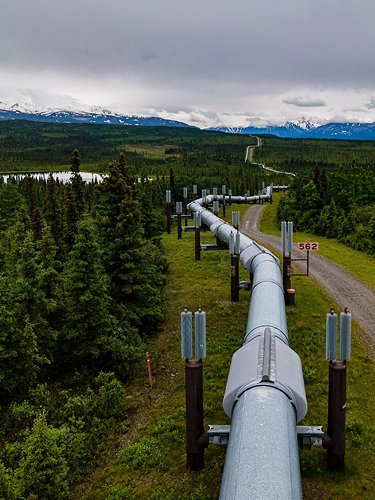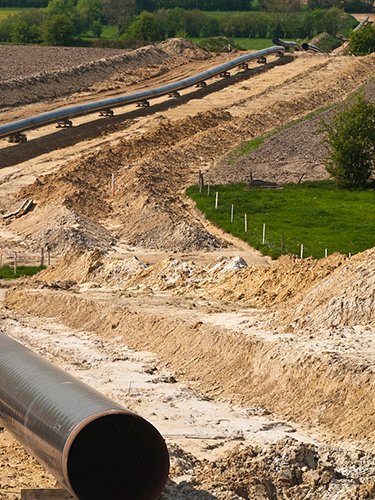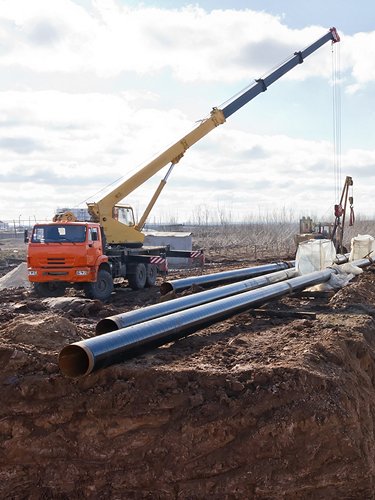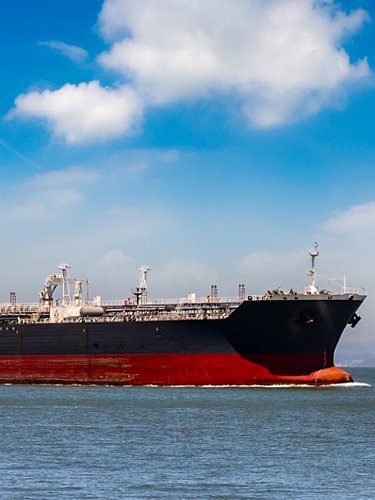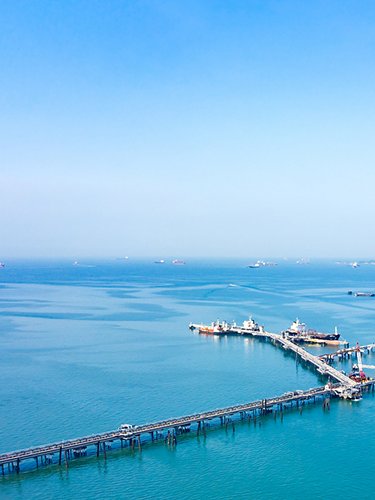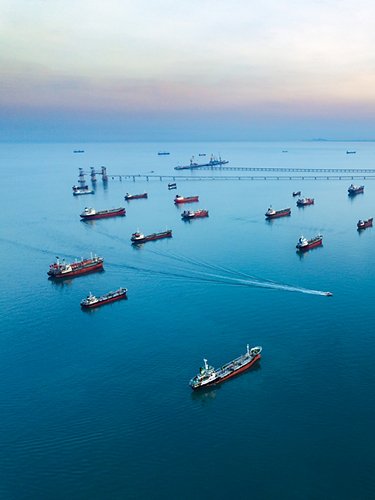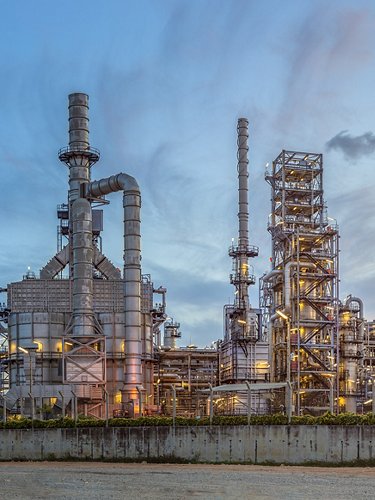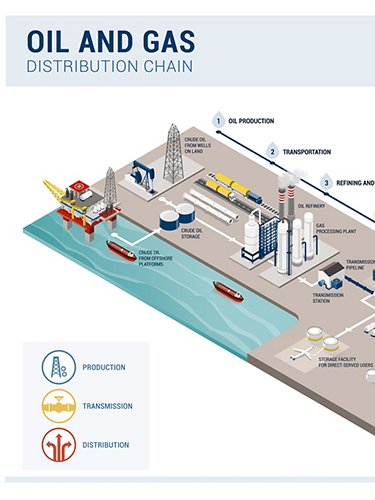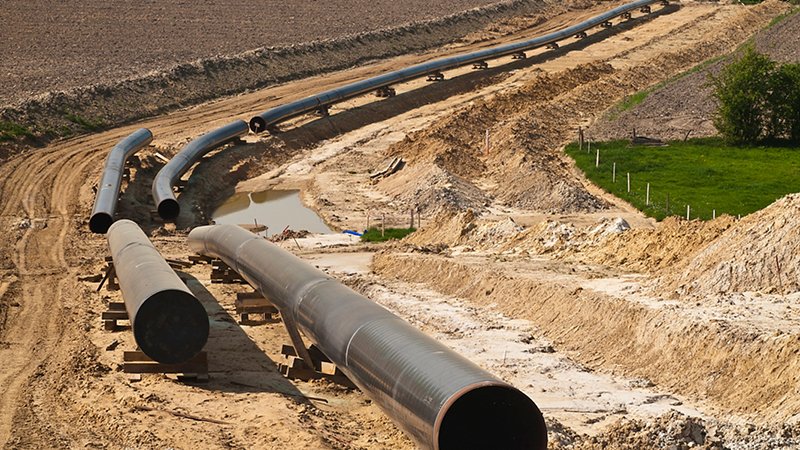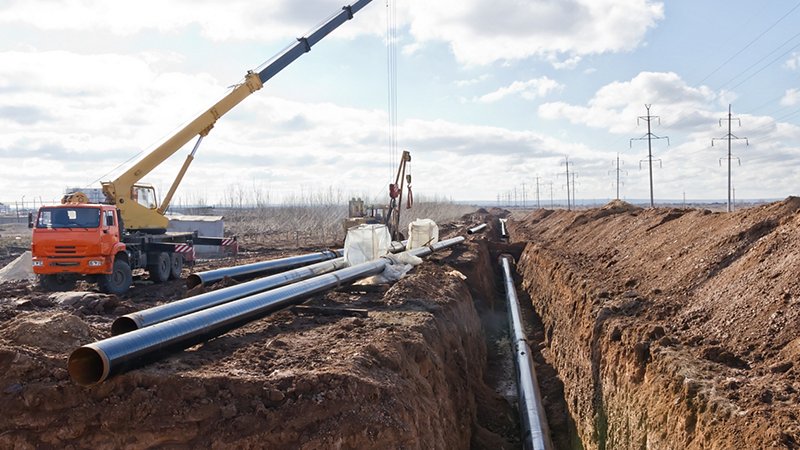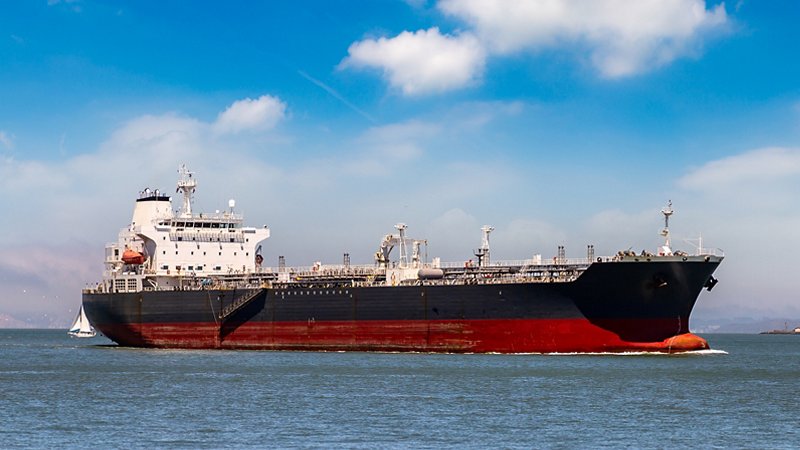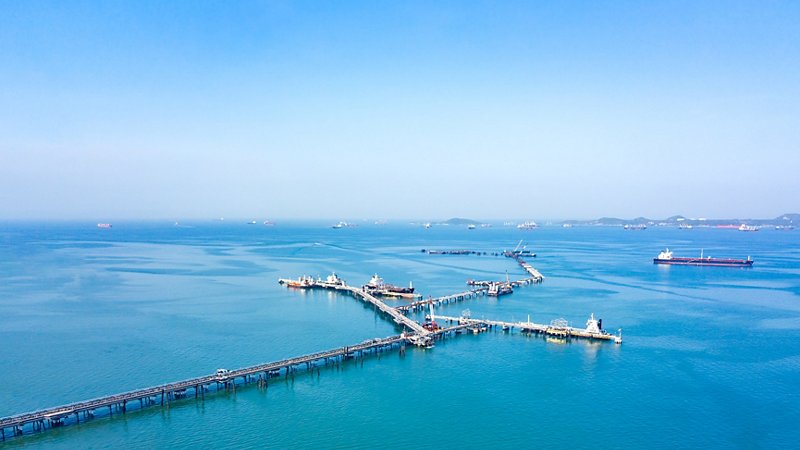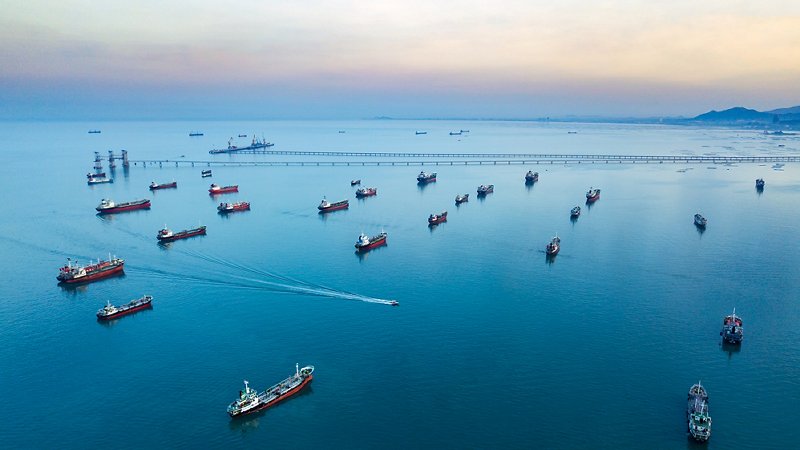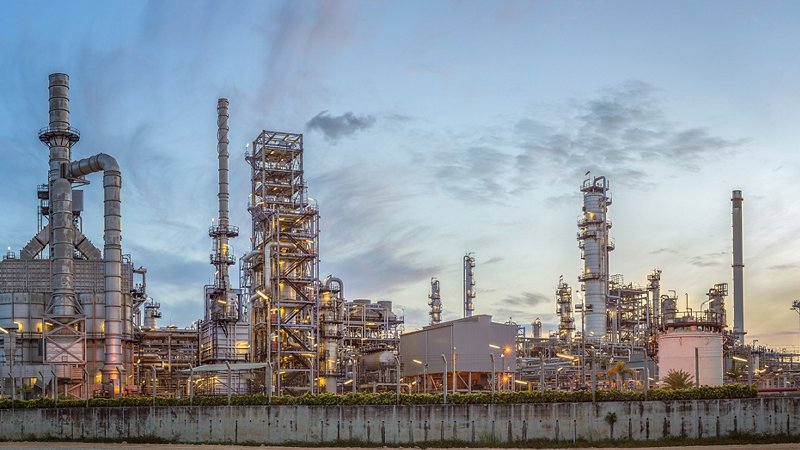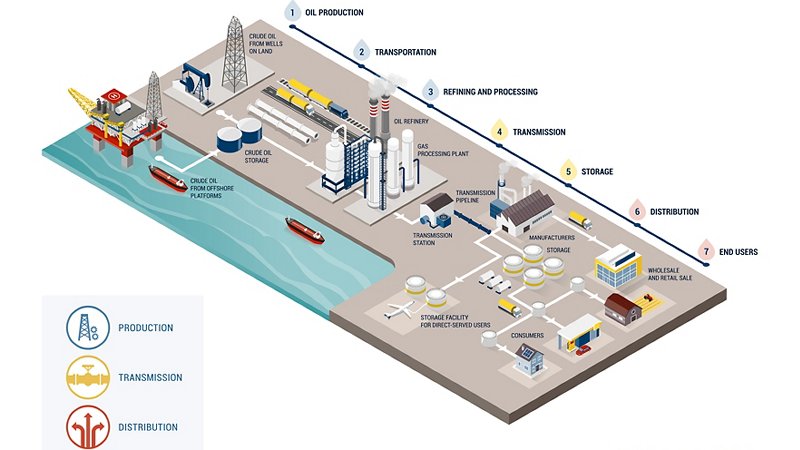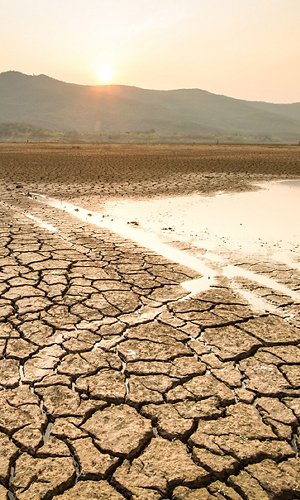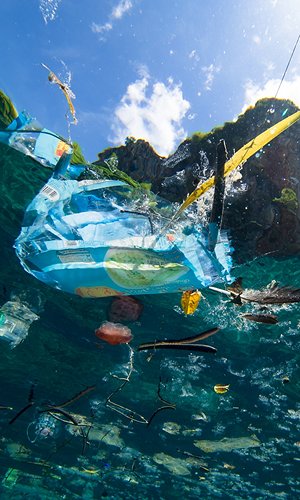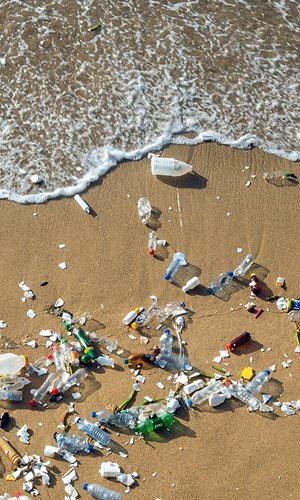Oil is present in sufficient quantities to start production only in certain areas of the world, therefore most of it needs to be transported to reach refineries and the place of consumption. In terms of transport, there are two complementary ways to transport oil: by land through oil pipelines and by sea thanks to oil tankers. Pipelines include a system of 10-12 metre long steel pipes electrically welded together. The flow of crude oil along the pipeline is ensured by large pumps. Control and safety stations distributed along the route ensure transportation to ports and refineries.
A modern tanker is equipped with separate double hull storage compartments (i.e. equipped with a double metal shell to protect the oil being transported) and other complex failure prevention systems to minimize the risk of oil spills in the sea.

